News
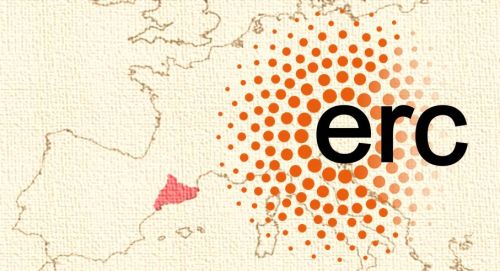
08/02/2018
ERC Grants & the Catalan Research System: a Success Story
ERC Grants & the Catalan Research System: a Success Story
From 2000 on, Catalonia has developed its own research system mainly based on an agency dedicated to attract talents (ICREA) and a network of 40 research centres (CERCA).
For instance, 5 of these CERCA centres are set up on the UAB university campus, main partner of the Barcelona Synchrotron Park: ICN2 (Catalan Institute of Nanoscience and Nanotechnology), IFAE (Institute for High Energy Physics), CRAG (Centre for Research in Agricultural Genomics), CVC (Computer Vision Centre) and ICP (Catalan Institute of Palaeontology).
The number of researchers awarded by the prestigious European Research Council (ERC) that has been allocating for 10 years very selective grants in the European Research Area (the 28 UE countries plus 12 associated countries) is a parameter, among others, to measure the quality of a European research system.
The occasion of this 10th anniversary has provided the Catalan AGAUR agency with the opportunity to analyse the results of all the ERC calls launched during the last decade (Fact Sheet ERC – Catalunya, in Catalan): 10 ERC Starting Grants calls, 5 ERC Consolidator Grants, 9 ERC Advanced Grants, 7 ERC Proof of Concept and 2 ERC Synergy Grants.
During this period of time, Catalonia has received 269 grants representing 52% of the Spanish awards. With 36 grants per million inhabitants, Catalonia ranks after Switzerland (72), Israel (61) and the Netherlands (46) and before Denmark (31), the United Kingdom (28), Germany (16) or France (16), among others.
For instance, 5 of these CERCA centres are set up on the UAB university campus, main partner of the Barcelona Synchrotron Park: ICN2 (Catalan Institute of Nanoscience and Nanotechnology), IFAE (Institute for High Energy Physics), CRAG (Centre for Research in Agricultural Genomics), CVC (Computer Vision Centre) and ICP (Catalan Institute of Palaeontology).
The number of researchers awarded by the prestigious European Research Council (ERC) that has been allocating for 10 years very selective grants in the European Research Area (the 28 UE countries plus 12 associated countries) is a parameter, among others, to measure the quality of a European research system.
The occasion of this 10th anniversary has provided the Catalan AGAUR agency with the opportunity to analyse the results of all the ERC calls launched during the last decade (Fact Sheet ERC – Catalunya, in Catalan): 10 ERC Starting Grants calls, 5 ERC Consolidator Grants, 9 ERC Advanced Grants, 7 ERC Proof of Concept and 2 ERC Synergy Grants.
During this period of time, Catalonia has received 269 grants representing 52% of the Spanish awards. With 36 grants per million inhabitants, Catalonia ranks after Switzerland (72), Israel (61) and the Netherlands (46) and before Denmark (31), the United Kingdom (28), Germany (16) or France (16), among others.
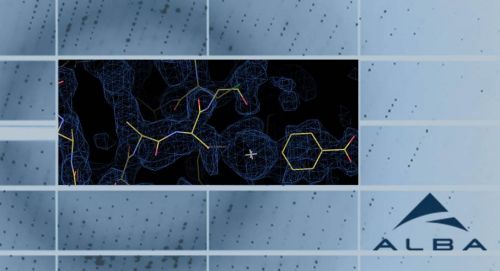
01/02/2018
The best of the Bioregion of Catalonia in 2017
The best of the Bioregion of Catalonia in 2017
The bioregion of Catalonia is an international reference bioregion as the 2015 Biocat report shows (Biocat is the organization that champions the healthcare and life sciences ecosystem in Catalonia).
ALBA synchrotron, among other with the XALOC beam line that allows the protein structure determination (see picture), is part of this ecosystem that represents 7% of the Catalan GDP with more than 700 companies (global turnover of € 14.4 billion) and about 90 research entities in the field and 15 university hospitals.
In a recent article entitled “The best of the bioregion in Catalonia in 2017”, Biocat takes stock of 2017, a year rich in scientific results and business transactions.
ALBA synchrotron, among other with the XALOC beam line that allows the protein structure determination (see picture), is part of this ecosystem that represents 7% of the Catalan GDP with more than 700 companies (global turnover of € 14.4 billion) and about 90 research entities in the field and 15 university hospitals.
In a recent article entitled “The best of the bioregion in Catalonia in 2017”, Biocat takes stock of 2017, a year rich in scientific results and business transactions.
We will only mention here the Nature’s editorial article highlighting Barcelona’s dynamic nature and great ability to attract international talent and the European Molecular Biology Laboratory new site hosted in the Centre for Genomic Regulation (CRG).
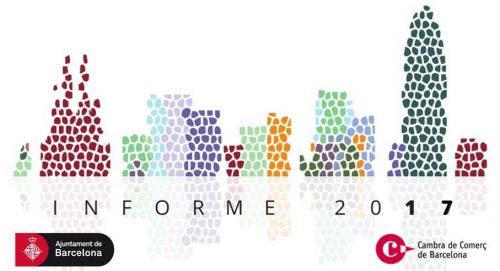
25/01/2018
Barcelona, a business friendly capital
Barcelona, a business friendly capital
Barcelona Synchrotron Park offers its companies a very suitable environment for business and innovation that can be quantified by the annual report issued by the Municipality of Barcelona and the Chamber of Commerce of Barcelona.
This document presents an overview of different cities worldwide rankings. According to indicators on business and innovation, the 2017 report presented few days ago (here, in Catalan) shows that in Europe Barcelona ranks 5th as the most innovating city (13th worldwide) and 5th too in terms of scientific production (papers).
Barcelona is among the Top 10 urban areas in the world for attracting foreign investments (2013-2017 period) and finished 2017 as the 15th best city for business opportunities and export for 2018.
Finally, it can be mentioned that the city ranks 8th worldwide for its reputation and is among the 25 world metropolis regarding global competitiveness.
This document presents an overview of different cities worldwide rankings. According to indicators on business and innovation, the 2017 report presented few days ago (here, in Catalan) shows that in Europe Barcelona ranks 5th as the most innovating city (13th worldwide) and 5th too in terms of scientific production (papers).
Barcelona is among the Top 10 urban areas in the world for attracting foreign investments (2013-2017 period) and finished 2017 as the 15th best city for business opportunities and export for 2018.
Finally, it can be mentioned that the city ranks 8th worldwide for its reputation and is among the 25 world metropolis regarding global competitiveness.
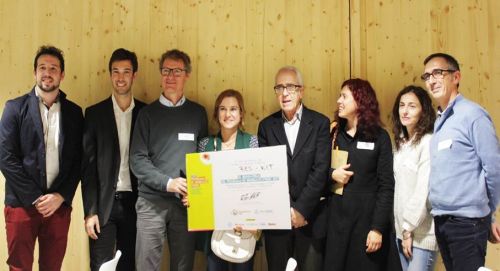
18/01/2018
When Ideas Generated at the UAB make cows happy
When Ideas Generated at the UAB make cows happy
The Ideas Generation Program carried out by PRUAB, the UAB university research park, is sponsored by the Barcelona Synchrotron Park (BSP). It is based on the collection of local companies’ technological challenges that are submitted to the UAB scientific community in order to try to find solutions through an ideas competition organized every autumn.
Every year, challenges come from a given sector. Last year, for instance, the 6th program tackled the biotechnology and biomedicine sectors (https://generacioidees.com/sisena-edicio/, in Catalan).
In that case, RES-KIT is one of the three awarded projects honoured by BSP director Pere Solà (see picture). Last week, Spanish newspaper El Mundo devoted to it a long article in the INnovadores section of its business pages.
RES-KIT is the first pen-site kit designed for detecting antimicrobial resistance genes that will allow an individual and rapid dairy cows treatment of mastitis (this infection of the mammary glands causes changes in the biochemical composition of milk and in the glands’ tissues). The kit is based on a microfluidics platform that allows lab-level tests at the very moment of milking with only one chip.
RES-KIT team led by Antoni Baldi from the Barcelona Institute of Microelectronics, UAB campus, is currently concluding proofs of concept before to go in search of funding.
Good luck!
Every year, challenges come from a given sector. Last year, for instance, the 6th program tackled the biotechnology and biomedicine sectors (https://generacioidees.com/sisena-edicio/, in Catalan).
In that case, RES-KIT is one of the three awarded projects honoured by BSP director Pere Solà (see picture). Last week, Spanish newspaper El Mundo devoted to it a long article in the INnovadores section of its business pages.
RES-KIT is the first pen-site kit designed for detecting antimicrobial resistance genes that will allow an individual and rapid dairy cows treatment of mastitis (this infection of the mammary glands causes changes in the biochemical composition of milk and in the glands’ tissues). The kit is based on a microfluidics platform that allows lab-level tests at the very moment of milking with only one chip.
RES-KIT team led by Antoni Baldi from the Barcelona Institute of Microelectronics, UAB campus, is currently concluding proofs of concept before to go in search of funding.
Good luck!
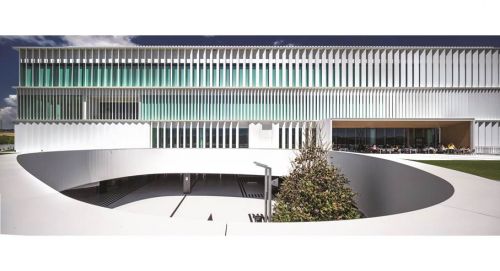
11/01/2018
2017, the Year When Stradivarius settled Down In the Barcelona Synchrotron Park
2017, the Year When Stradivarius settled Down In the Barcelona Synchrotron Park
Last year, Stradivarius settled down in the Barcelona Synchrotron Park with the opening of the new company’s global headquarters designed by Batlle i Roig (see picture).
For the well-known creative international clothing fashion brand (Inditex group), which closed the 2016 financial year with €1.343 billion in overall sales, 2017 also saw the launch of its men's fashion line after having opened in 2016 a lifestyle line (decoration, stationery and fragrances).
Last year, too, Stradivarius announced its collaboration with the British platform ASOS that opens new online markets in Italy, France, Germany, the United Kingdom, the United States and Australia (these latter two countries correspond to new markets).
2017 was also the year to pass the barrier of the thousand operational stores in 66 countries with new boutiques in Poland, Spain, Italy, Morocco, Lebanon, Mexico, France, China or Turkey, among others.
Congratulations, Stradivarius!
For the well-known creative international clothing fashion brand (Inditex group), which closed the 2016 financial year with €1.343 billion in overall sales, 2017 also saw the launch of its men's fashion line after having opened in 2016 a lifestyle line (decoration, stationery and fragrances).
Last year, too, Stradivarius announced its collaboration with the British platform ASOS that opens new online markets in Italy, France, Germany, the United Kingdom, the United States and Australia (these latter two countries correspond to new markets).
2017 was also the year to pass the barrier of the thousand operational stores in 66 countries with new boutiques in Poland, Spain, Italy, Morocco, Lebanon, Mexico, France, China or Turkey, among others.
Congratulations, Stradivarius!
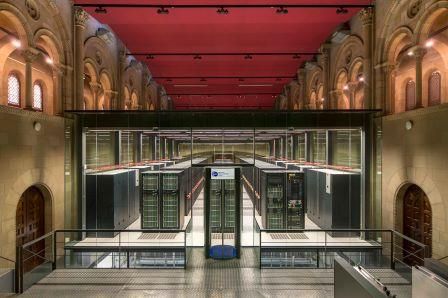
21/12/2017
Barcelona Supercomputing Center: Beautiful, Powerful And European
Barcelona Supercomputing Center: Beautiful, Powerful And European
In addition to ALBA synchrotron, Barcelona Supercomputing Center (BSC-CNS) is the other large scientific facility in Catalonia.
Recently, BSC-CNS, which hosts the IBM’s MareNostrum 4 supercomputer in an old chapel, was awarded by the DCD group (Data Center Dynamics) as the most beautiful data center in the world. By the way, MareNostrum 4 ranks 16 among the most powerful supercomputers according to the last worldwide Top500 ranking published last month.
More news from BSC-CNS: the center will be the leader in the development of the future European chips. This project initiated by the European Commission aims at guarantying technological sovereignty and industrial competitiveness of the continent. The corresponding €240 million investment will be managed by BSC-CNS until 2021.
This challenge is part of the new EuroHPC (High Performance Computing) initiative launched in March of this year to insure that the USA, China and Japan don’t outstrip Europe in computing capacity.
In addition to the development of new chips, EuroHPC also includes the development and the production of the next four European supercomputers with computing capacities higher than any current machine. It is highly probable that one of these future supercomputers will be MareNostrum 5. If so, that will represent about €120 million from the European Union to build in Barcelona a supercomputer 20 times faster than MareNostrum 4.
Congratulations!
Recently, BSC-CNS, which hosts the IBM’s MareNostrum 4 supercomputer in an old chapel, was awarded by the DCD group (Data Center Dynamics) as the most beautiful data center in the world. By the way, MareNostrum 4 ranks 16 among the most powerful supercomputers according to the last worldwide Top500 ranking published last month.
More news from BSC-CNS: the center will be the leader in the development of the future European chips. This project initiated by the European Commission aims at guarantying technological sovereignty and industrial competitiveness of the continent. The corresponding €240 million investment will be managed by BSC-CNS until 2021.
This challenge is part of the new EuroHPC (High Performance Computing) initiative launched in March of this year to insure that the USA, China and Japan don’t outstrip Europe in computing capacity.
In addition to the development of new chips, EuroHPC also includes the development and the production of the next four European supercomputers with computing capacities higher than any current machine. It is highly probable that one of these future supercomputers will be MareNostrum 5. If so, that will represent about €120 million from the European Union to build in Barcelona a supercomputer 20 times faster than MareNostrum 4.
Congratulations!









